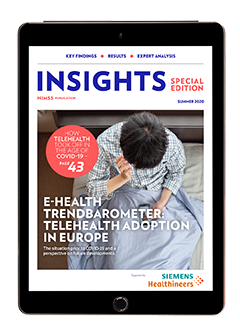

Whether it’s mobile health or solutions and services for administrative, educational, or medical purposes, the adoption of telehealth has always been associated with social factors, various approaches to communication and cooperation, and therefore, care models. Although the majority of stakeholders recognize the clear advantages of innovation in virtual health and care delivery, healthcare providers have often lacked critical incentives to promote widespread adoption. The infrastructure and technology were there, but at the same time, barriers of funding, interoperability, regulations, and cultural issues slowed down the transformation.
In a mature European healthcare ecosystem with many regional differences, immense challenges like aging societies, rising healthcare costs, and the burden of non-communicable diseases, have increasingly focused minds on the opportunity that telehealth offers to improve clinical, social and economic outcomes. Some national governments have developed strategies to promote adoption and developed financial and regulatory support. As this report indicates, uptake of telehealth is sensitive to these incentives. Before COVID-19, the technology to enable telehealth in clinical contexts was widely available but it was more often used for administration and meetings than for telemedicine. COVID-19 has seen unprecedented acceleration in telehealth adoption, but this report provides important insights for future planning. Governments and health systems will need to consider the long-term incentives required to ensure momentum around telehealth adoption is maintained in clinical practice.
Just before the outbreak of the COVID-19 pandemic, HIMSS looked at the state of telehealth in Europe. A survey conducted among healthcare stakeholders from 27 countries resulted in intriguing conclusions and insights into the provision of telehealth solutions and services, key challenges and the business landscape. Findings also reinforce that the advances in virtual health in Europe are at a critical point.